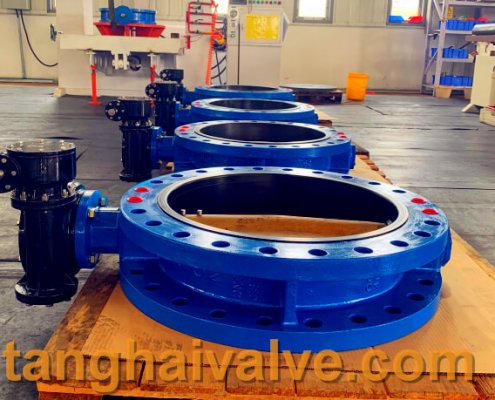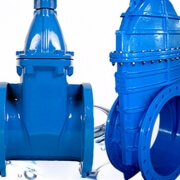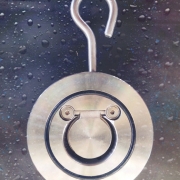Introduction of U-shaped flange butterfly valve
What is U-shaped flange connection butterfly valve?
The U shaped butterfly valve is simple in structure, small in size and light in weight, and consists of only a few parts. Moreover, it can be opened and closed quickly

U-type flange butterfly valve, ductile iron, DI, center line,
by rotating 90°, and the operation is simple. At the same time, the valve has good fluid control characteristics.
The butterfly plate of the U type butterfly valve is installed in the diameter direction of the pipeline. In the cylindrical passage of the butterfly valve body, the disc-shaped butterfly plate rotates around the axis, and the rotation angle is between 0° and 90°. When the rotation reaches 90°, the valve is fully opened.
The butterfly valve is simple in structure, small in size and light in weight, and consists of only a few parts. Moreover, it can be opened and closed quickly by rotating 90°, and the operation is simple. At the same time, the valve has good fluid control characteristics. When the flange butterfly valve is in the fully open position, the thickness of the butterfly plate is the only resistance when the medium flows through the valve body, so the pressure drop generated by the valve is small, so it has better flow control characteristics. The butterfly valve has two sealing types: elastic seal and metal seal. Elastic sealing valve, the sealing ring can be embedded in the valve body or attached to the periphery of the butterfly plate.
Valves with metal seals generally have a longer life than valves with elastic seals, but it is difficult to achieve a complete seal. Metal seals can adapt to higher operating temperatures, while elastic seals have the defect of being limited by temperature.
If the butterfly valve is required to be used as a flow control, the main thing is to correctly choose the size and type of the valve. The structure principle of the butterfly valve is especially suitable for making large diameter valves. Butterfly valves are not only widely used in general industries such as petroleum, gas, chemical, water treatment, etc., but also used in cooling water systems of thermal power stations.
Commonly used butterfly valves include wafer butterfly valves and flange butterfly valves. Wafer type butterfly valve uses double-head bolts to connect the valve between two pipe flanges. Flange type butterfly valve has flanges on the valve, and bolts are used to connect the flanges at both ends of the valve to the pipe flanges.
When in the fully open position, the thickness of the butterfly plate is the only resistance when the medium flows through the valve body, so the pressure drop generated by the valve is small, so it has better flow control characteristics. The butterfly valve has two sealing types: elastic seal and metal seal. Elastic sealing valve, the sealing ring can be embedded in the valve body or attached to the periphery of the butterfly plate. Valves with metal seals generally have a longer life than valves with elastic seals, but it is difficult to achieve a complete seal. Metal seals can adapt to higher operating temperatures, while elastic seals have the defect of being limited by temperature.
If the butterfly valve is required to be used as a flow control, the main thing is to correctly select the size and type of the valve. The structure principle of the butterfly valve is especially suitable for making large diameter valves. Butterfly valves are not only widely used in general industries such as petroleum, gas, chemical, water treatment, etc., but also used in cooling water systems of thermal power stations.
Commonly used butterfly valves include wafer butterfly valves and flange butterfly valves. Wafer type butterfly valve uses double-head bolts to connect the valve between two pipe flanges. Flange type butterfly valve has flanges on the valve, and bolts are used to connect the flanges at both ends of the valve to the pipe flanges.

 tanghaivalve.com
tanghaivalve.com tanghaivalve.com
tanghaivalve.com 

 © Copyright 2020 Tianjin Tanghaidongyang Valve Co., Ltd. All Rights Reserved.
© Copyright 2020 Tianjin Tanghaidongyang Valve Co., Ltd. All Rights Reserved.